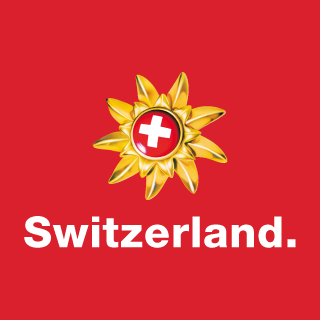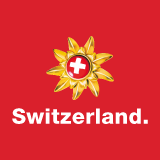Art museums and collections
Switzerland is a country of collectors. A major part in the art market has long been played by the great industrial families, some of whom assembled important collections. Examples include the collections of Oskar Reinhart in Winterthur and Emmanuel Hoffmann in Basel.
The widespread view that art required private sponsorship prevailed in Switzerland until the 1970s. But public involvement and subventions are also present, and are on the increase. Nevertheless, it is noticeable that the four largest institutions opened since 1992 were all financed privately, including the Paul Klee Museum.
Kunsthaus Zurich
The Kunsthaus Zurich enjoys international renown. The body which sponsors and manages it is the Zurich Art Association which has been collecting art in Zurich since 1787. It is now Europe's second largest art association. High-calibre exhibitions have scored repeated public successes for the Kunsthaus. The Kunsthaus also maintains some important collections: old masters, impressionists and expressionists, and works of the Dada movement. In addition, there is a collection of photographs with works by famous names such as Beuys, Christo, Polke, Rainer and Roth as well as Swiss representatives including Burkhard, Danuser, Fischli/Weiss, Lüthi, Signer, Strba, Voita and Wick. Another attraction is a video collection with items from the pioneering era of this medium in the 1960s through to today's video boom.The museum building by Karl Moser was opened in 1910, has been extended several times and underwent a complete refurbishment between 2001 and 2005. By 2020, a new extension to the Kunsthaus will be built according to plans by the award-winning architect David Chipperfield. Kunsthaus Zurich
Beyeler Foundation, Basel-Riehen
The Beyeler Foundation owns the art collection of Hildy and Ernst Beyeler, which was assembled by the couple in the course of about 50 years and was transferred to a foundation in 1982. The collection documents the personal perspective of this gallery-owning couple on the art of the 20th century. It is devoted to classical modernism and contemporary art, with works by Jean Arp, Marc Chagall, Edgar Degas, Wassily Kandinsky, Auguste Rodin, Mark Rothko and Andy Warhol.Ernst Beyeler's dream was to bring together groups of works by great artists of the last 100 years with sculptures from Africa and Oceania at a suitable location. He was impressed by the work of Renzo Piano, whose designs included the Centre Pompidou, so he commissioned this Italian architect to build his museum. Renzo created a museum complex with three wings that blend nature, daylight and art; visitors have enthused about it ever since it was opened in 1997. Its success is enhanced by an idyllic site on the Villa Berower estate, which was made available by the commune of Riehen. Every year, the Beyeler Foundation mounts three major exhibitions of modern art.
Fondation Beyeler
Landesmuseum (Swiss National Museum), Zurich
Many Swiss museums focus especially on this country's culture. The Swiss National Museum in Zurich is a particularly noteworthy example. The Landesmuseum, the Château de Prangins and the Swiss History Forum in Schwyz together constitute the group of Swiss National Museums. All three of them stage exhibitions that depict Switzerland's varied history and diverse culture, affording insights into the factors that make Switzerland what it is. The Landesmuseum offers an entertaining journey through Swiss history which children will also enjoy. Those with a taste for the terrifying halberds of the Confederates of yore or the funerary ornaments of the pile-dwellers should wander through the permanent exhibition.Landesmuseum
Museum Rietberg, Zurich
The Museum Rietberg is the only art museum in Switzerland that displays treasures from non-European cultures. It is housed in the former Villa Wesendonck in the Rieterpark. Not far from here, Richard Wagner was once consumed with longing for Mathilde, the chatelaine and young Mrs Wesendonck, who had given the composer "asylum on the green hill" in a nearby house. This love inspired Wagner to compose his masterpiece "Tristan and Isolde" – but the affair came to nothing. On the other hand, Wagner assiduously read Schopenhauer's works and was fired by his enthusiasm for Buddhism. His reading was incorporated into "Die Sieger" ("The Victors") – an opera that narrates the last wanderings of the historical Buddha. Wagner's followers in Zurich were so enraptured that they soon formed one of the earliest circles of Buddhism enthusiasts in Europe. This explains why today's Museum Rietberg houses one of the finest Buddhist collections in Europe. The museum also accommodates the collection of Baron Eduard von der Heydt (1882 – 1964). He assembled a large collection of Asian, African, American and Oceanic art in the 1920s and 1930s. In 2007, the museum doubled its exhibition area by adding a modern annexe.Museum Rietberg
Migros Museum of Contemporary Art, Zurich
Founded in 1996, the Migros Museum of Contemporary Art sees itself as a venue where art can be created and contemplated. The museum is housed on the Löwenbräu site – where the Zurich beer of the same name used to be brewed. This museum veers away from tried-and-tested works, preferring to exhibit art that is created in close collaboration and interaction with the artists themselves. Many of the works purchased for the collection are taken from the exhibitions. The museum's collection traces its origins to Gottlieb Duttweiler. In the mid-1950s, he began to buy works by local and national artists. In the 1970s, the museum focused on minimal art, German painting and major Swiss works. For the last two decades, the focus has been on contemporary art including works by Maurizio Cattelan, Spartacus Chetwynd, Rachel Harrison, Tatiana Trouvé and Christoph Schlingensief, among others. MigrosmuseumCollection de L'Art Brut, Lausanne
Lausanne has Jean Dubuffet to thank for its Collection de l’Art Brut. This French artist and collector was fascinated by self-taught artists, whose works he collected. He coined the generic term "Art brut" (or "Outsider art") for art created by amateurs, children, and people with mental disabilities. In 1971, he handed his collection over to the city of Lausanne. Dubuffet's collection has been accessible to the public since 1976 and it has grown continuously since then. The museum has made a name for itself with temporary exhibits on individual artists and themes. Today, the collection comprises over 63,000 works by 400 Swiss and international artists. About 700 works are on permanent display in the rooms of the Château de Beaulieu.Collection de L'Art Brut
House of Electronic Arts, Basel
Basel's House of Electronic Arts is devoted to the broad range of electronic arts. It combines the activities of the Forum for New Media and Shift, the electronic arts festival, under one roof. The House sees itself as a centre for contemporary art that makes use of – and reflects the use of – the electronic media. The House of Electronic Arts focuses on the conservation, archiving and documentation of digital art. Its exhibitions, concerts, lectures, guided tours and workshops address an extensive public.Haus für elektronische Künste
Tinguely Museum, Basel
In the collection of the Tinguely Museum, visitors can admire works and groups of works from all phases of the career of Jean Tinguely (1925–1991), giving them an overview of the artist's overall oeuvre. As well as sculptures, the collection includes numerous drawings, documents, exhibition posters, catalogues and photographs. Works on temporary loan complete the offering.The museum is housed in an impressive building designed by the renowned Swiss architect Mario Botta. Here on the bank of the river Rhine, he created a space that offers an exceptional setting for Tinguely's works. The gigantic central hall can accommodate as many as twenty machine sculptures. After visiting the museum, visitors can relax and enjoy the historic Solitude Park with its ancient trees, the Rhine Promenade and a bistro.
Paul Klee Centre, Berne
This collection shows works by Paul Klee (1879–1940), with alternating exhibitions that focus on new aspects of his oeuvre. The Centre's art repository contains well over 4,000 works. The museum in Berne therefore has the world's largest and most important collection of paintings, water-colours and drawings by this artist, whose works can be assigned to many movements: expressionism, constructivism, cubism, primitivism and even surrealism. The museum offers a flanking programme with musical, literary, theatrical and dance events. For younger visitors, the Creaviva children's museum offers some colourful activities aimed at various age groups.Paul Klee Centre
Kirchner Museum, Davos
Ernst Ludwig Kirchner (1880–1938) lived in Davos from 1918 until he committed suicide there. It was probably despair that caused him to take his own life, because the Nazis had stigmatised his art as decadent. Kirchner came to Davos because he hoped to recover from his paralysis there. Davos and its environs inspired the artist to create many important works.This museum offers the exceptional experience of viewing Kirchner's art in the place where it was created. As well as Kirchner's expressive works, the museum building by the two renowned architects Annette Gigon and Mike Guyer is worthy of note. The building enhances the presentation and perception of Kirchner's art, with vistas of the Alpine countryside that shaped his Swiss oeuvre. The museum won an award from the Swiss Federal Institute of Technology (ETH) for its innovative use of daylight.
Kirchner Mueseum
Segantini Museum, St. Moritz
Giovanni Segantini (1858–1899) is regarded as an important artist of the realistic symbolism movement, and as a major innovator in Alpine painting at the end of the 19th century. This stateless artist moved to the Engadine in 1894. He died suddenly in 1899 while working on the Schafberg mountain, high above Pontresina. Only nine years later, St. Moritz opened a museum paying tribute to Segantini's important work. This museum now houses the world's most extensive group of the artist's works. Since the exhibition to mark the centenary of the artist's death, the Segantini Museum has usually mounted a small but noteworthy summer exhibition focusing on fascinating aspects of his work.Segantini Mueseum
Rosengart Collection, Lucerne
Aficionados of impressionism and classical modernism should be sure not to miss the Rosengart collection. The collection of Siegfried Rosengart and his daughter Angela Rosengart contains over 300 works by 23 different artists with familiar names. Alongside Pablo Picasso and Paul Klee, there are works by Bonnard, Cézanne, Chagall, Dufy, Kandinsky, Matisse, Miró, Modigliani, Monet and Renoir ... the list goes on. All of them were pioneers who played key parts in propelling art towards abstraction. One of the central features here is the collection of works by Pablo Picasso. Thanks to the friendship between the Rosengarts and Picasso, over 32 paintings (mostly later works) can be admired in Lucerne. They are flanked by over 100 drawings and water-colours as well as graphic works and sculptures by this versatile artist. Photographs by David Douglas Duncan also afford insights into the painter's life. 125 water-colours, drawings and paintings by Paul Klee form a second focus of this collection. They document all his creative periods, bearing witness to the visual and narrative wealth of Klee's oeuvre.Rosengart Collection
The Oskar Reinhart Collection "Am Römerholz", Winterthur
The former villa of the art collector Oskar Reinhart (1885–1965) houses over two hundred paintings, drawings and sculptures from the world of European art. The centrepiece of the collection comprises paintings by the French impressionists and their immediate predecessors. Courbet, Daumier, Renoir, Manet and Cézanne are represented by major groups of works, illustrating these artists' journeys towards modernism.The collection is located in an elevated position on the edge of the forest, in the "Am Römerholz" villa. This building was designed by the Geneva architect Turrettini in about 1915, and is a typical example of an urban villa for an entrepreneur who acquired wealth during the era of industrialisation. The extensive gardens are also worth a visit. They are among the best-preserved and most beautiful to be seen in Switzerland.
Römerholz

